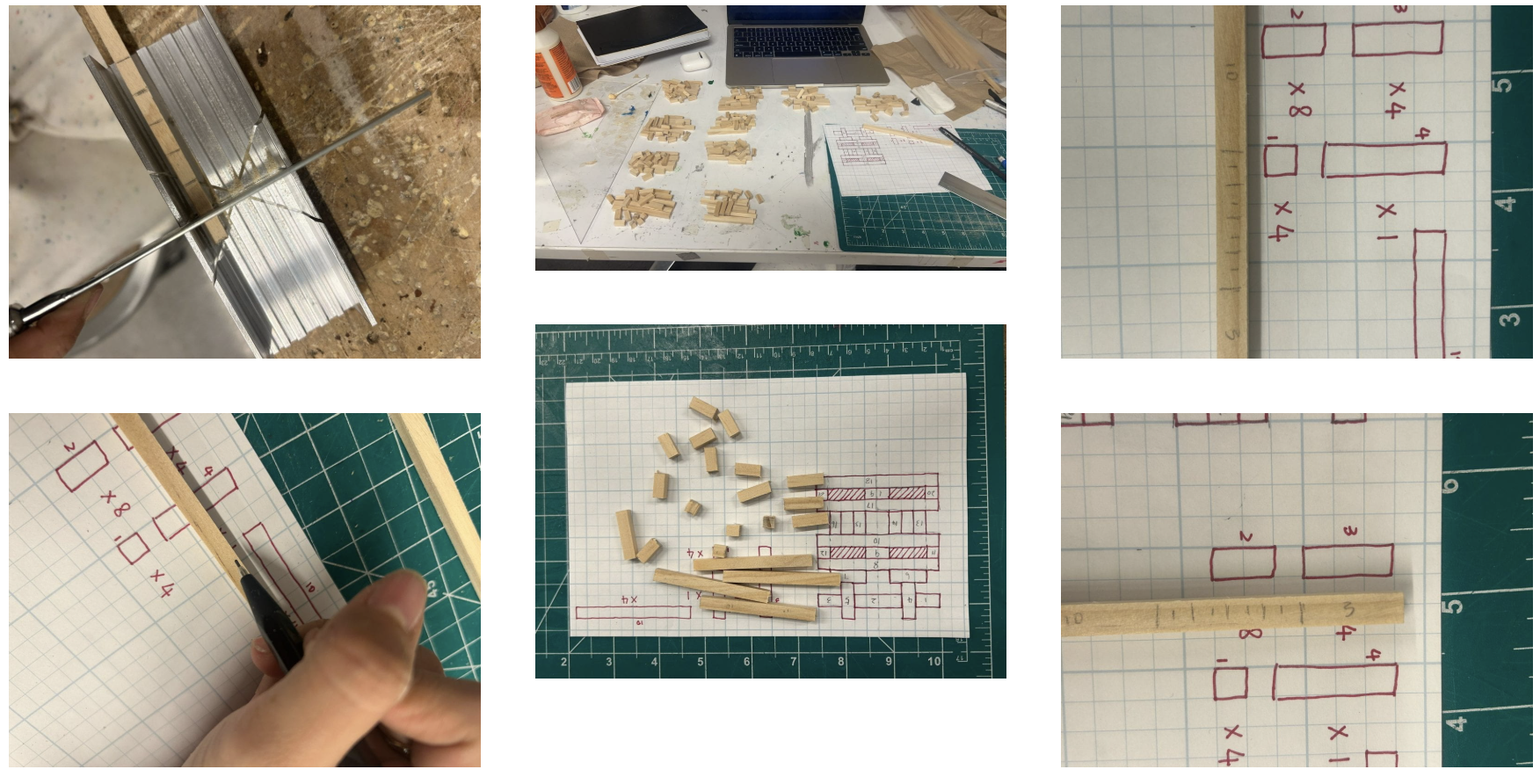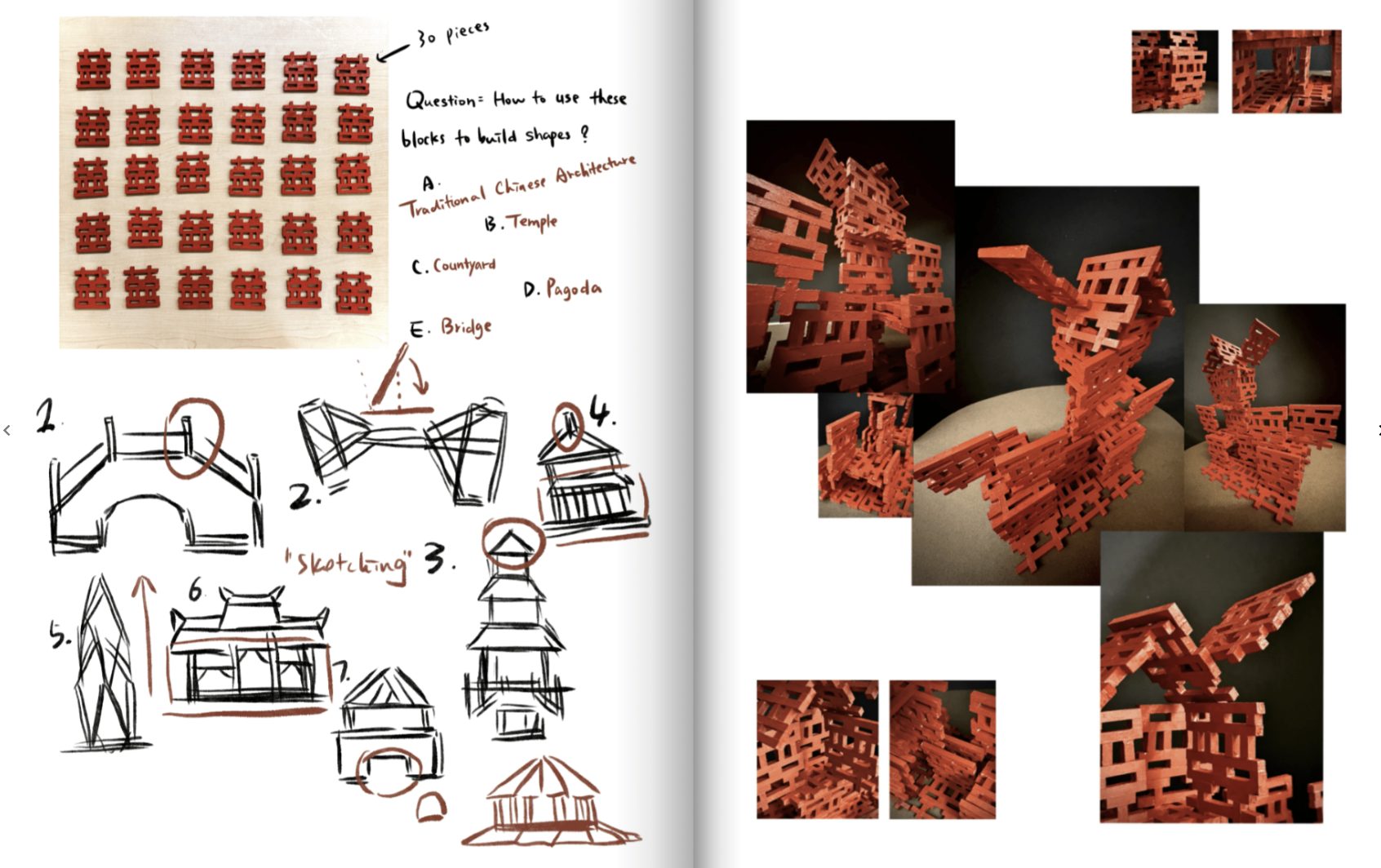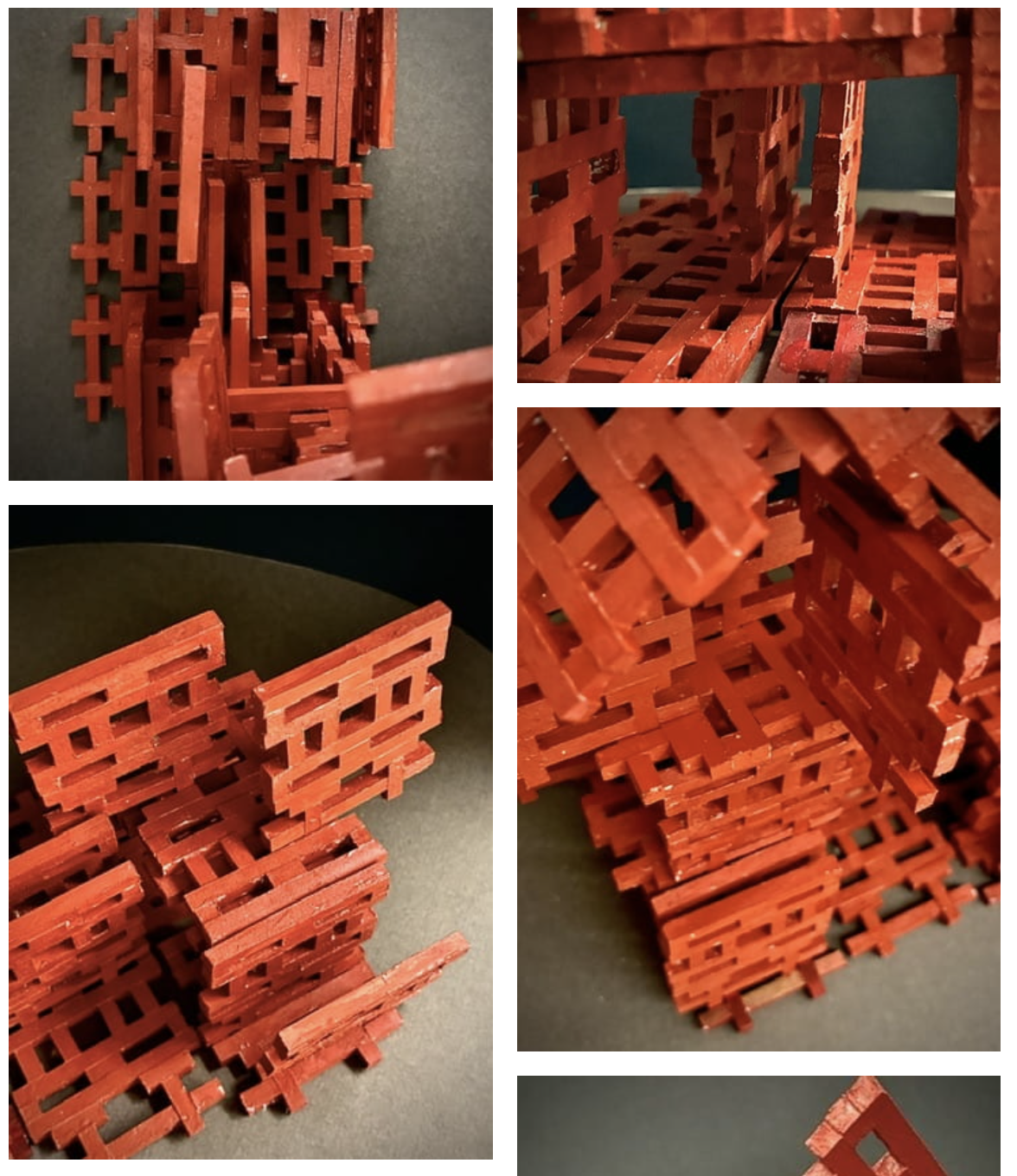

This modular sculpture project investigates the relationship between structure, repetition, and cultural symbolism through spatial exploration. The design is inspired by the traditional Chinese character “喜 (Xi)”, meaning happiness or joy. By deconstructing and reinterpreting its symmetrical strokes as geometric modules, I transformed a two-dimensional symbol into a three-dimensional architectural form that echoes the rhythm and balance of ancient Chinese buildings.

The process required both precision and patience. Each module was cut, sanded, and assembled by hand, demanding accuracy to maintain stability and proportion. The repeated modular units were then joined to form an interlocking structure that resembles elements of temples, pagodas, and courtyards. This construction method reflects the traditional logic of Chinese joinery, where balance and harmony are achieved through layered connections rather than visible fasteners.


Throughout the process, I faced multiple challenges—especially in achieving clean cuts and maintaining alignment. Even a slight deviation could cause the entire structure to lose balance. To solve this, I carefully sanded each piece after cutting and adjusted the gluing method, using a damp cloth to remove excess adhesive and preserve the wood’s clean finish.
Conceptually, this project became an exercise in transforming language into form—bridging the boundaries between calligraphy, architecture, and sculpture. It taught me how repetition and modularity can generate spatial rhythm, how patience can evolve into precision, and how cultural motifs can take on new life through contemporary material expression.
Ultimately, Balsa Wood embodies the dialogue between tradition and experimentation: a meditative process that merges ancient philosophy with modern design practice, turning a written character into a living spatial structure.
